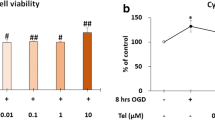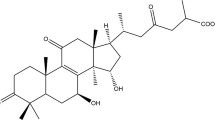Abstract
The TUNEL method is used to quantify the proapoptotic effects of an NO donor, S-nitroso-N-acetylpenicillamine (SNAP), in NG108-15 cells. Unlike sodium nitroprusside used in previous studies, SNAP does not release cyanide along with NO, thus NO toxicity was determined without concurrent cyanide toxicity. The present study also determined if pretreatment with ANP could protect against NO-induced apoptosis in NG108-15 cells. Cell death at 24 h following SNAP treatment was associated with apoptotic DNA fragmentation. SNAP at 0.5, 0.75, 1.0, and 2.0 mM caused significant (P<0.05) increases in the percentage of TUNEL-labeled cells from a control of 0.90% to 6.19%, 6.36%, 7.25%, and 15.1%, respectively. Thus, SNAP caused concentration-dependent induction of apoptosis in NG108-15 cells. SNAP-induced apoptosis was confirmed by morphological changes and increased levels of polynucleosome-sized fragments of DNA assessed by capillary electrophoresis. Preincubation for 24 h with ANP at 0.01, 0.1, and 1.0 μM, before the SNAP, significantly (P<0.05) decreased the percentage of labeled cells from 7.25% to 5.10%, 4.36%, and 3.24% in the presence of SNAP (1 mM) and from 15.1% to 7.91%, 6.64%, and 5.60% in the presence of SNAP (2 mM), respectively, representing protection of 24.0%, 34.0%, and 57.0% against SNAP (1 mM) and 26.0%, 37.0%, and 50.9% against SNAP (2 mM). Thus, prior activation of a cGMP-mediated neuroprotective mechanism induced by ANP appears to counterbalance, at least partially, the proapoptotic effects of excess NO. This neuroprotective mechanism involving cGMP may be especially important in protecting against the development of neurodegenerative diseases in which excess NO is thought to contribute to neuronal apoptosis.







Similar content being viewed by others
References
Andoh T, Chock PB, Chiueh CC (2002) Preconditioning-mediated neuroprotection: role of nitric oxide, cGMP, and new protein expression. Ann N Y Acad Sci 962:1–7
Barger SW, Fiscus RR, Ruth P, Hofmann F, Mattson MP (1995) Role of cyclic GMP in the regulation of neuronal calcium and survival by secreted forms of β-amyloid precursor. J Neurochem 64:2087–2096
Beckman JS, Koppenol WH (1996) Nitric oxide, superoxide and peroxynitrite: the good, the bad, and the ugly. Am J Physiol 271:C1424–C1437
Ben-Sasson S, Sherman Y, Gavrieli Y (1995) Identification of dying cells: in situ staining. In: Schwartz L, Osborne B (eds) Methods in cell biology. Academic, San Diego, pp 29–39
Bonni A, Brunet A, West AE, Datta SR, Takasu MA, Greenberg ME (1999) Cell survival promoted by Ras-MAPK signaling pathway by transcription-dependent and -independent mechanisms. Science 286:1358–1362
Cote F, Laflamme L, Payet MD, Gallo-Payet N (1998) Nitric oxide, a new second messenger involved in the action of angiotensin II on neuronal differentiation of NG108-15 cells. Endocr Res 24:403–407
Estevez AG, Spear N, Manuel SM, Barbeito L, Radi R, Beckman JS (1998a) Role of endogenous nitric oxide and peroxynitrite formation in the survival and death of motor neurons in culture. In: Mize RR, Dawson TM, Dawson VL, Friedlander MJ (eds) Progress in brain research, vol 118. Nitric oxide in brain development, plasticity, and disease. Elsevier, Amsterdam, pp 269–280
Estevez AG, Spear N, Thompson JA, Cornwell TL, Radi R, Barbeito L, Beckman JS (1998b) Nitric oxide-dependent production of cGMP supports the survival of rat embryonic motor neurons cultured with brain-derived neurotrophic factor. J Neurosci 18:3708–3714
Farinelli SE, Park DS, Greene LA (1996) Nitric oxide delays the death of trophic factor-deprived PC12 cells and sympathetic neurons by a cGMP-mediated mechanism. J Neuroscience 16:2325–2334
Fiscus RR (1988) Molecular mechanisms of endothelium-mediated vasodilation. Semin Thromb Hemost 14(suppl):12–22
Fiscus RR (2002) Involvement of cyclic GMP and protein kinase G in the regulation of apoptosis and survival in neural cells. Neurosignals 11:175–190
Fiscus RR, Ming SK (2000) Biology of ageing. In: Pang WS, Teoh MK, Ming SK (eds) Medicine and surgery in the older person. Armour, Singapore, pp 29–42
Fiscus RR, Murad F (1988) cGMP-dependent protein kinase activation in intact tissues. Methods Enzymol 159:150–159
Fiscus RR, Rapoport RM, Murad F (1983) Endothelium-dependent and nitrovasodilator-induced activation of cyclic GMP-dependent protein kinase in rat aorta. J Cyclic Nucleotide Protein Phosphor Res 9:415–425
Fiscus RR, Torphy TJ, Mayer SE (1984) Cyclic GMP-dependent protein kinase activation in canine tracheal smooth muscle by methacholine and sodium nitroprusside. Biochim Biophys Acta 805:382–392
Fiscus RR, Rapoport RM, Waldman SA, Murad F (1985) Atriopeptin II elevates cyclic GMP, activates cyclic GMP-dependent protein kinase and causes relaxation in rat thoracic aorta. Biochim Biophys Acta 846:179–184
Fiscus RR, Robles BT, Waldman SA, Murad F (1987) Atrial natriuretic factors stimulate accumulation and efflux of cyclic GMP in C6–2B rat glioma and PC12 rat pheochromocytoma cell cultures. J Neurochem 48:522–528
Fiscus RR, Leung CPC, Yuen JPS, Chan HC (2001a) Quantification of apoptotic DNA fragmentation in a transformed uterine epithelial cell line, HRE-H9, using capillary electrophoresis with laser-induced fluorescence (CE-LIF). Cell Biol Int 25:1007–1011
Fiscus RR, Tu AWK, Cheng Chew SB (2001b) Natriuretic peptides inhibit apoptosis and prolong the survival of serum-deprived PC12 cells. Neuroreport (Neurochem) 12:185–189
Fiscus RR, Yuen JP, Chan SL, Kwong JH, Chew SB (2002) Nitric oxide and cyclic GMP as pro- and anti-apoptotic agents. J Card Surg 17:336–339
Fujita K, Ohyama H, Yamada T (1997) Quantitative comparison of in situ methods for detecting apoptosis induced by X-ray irradiation in mouse thymus. Histochem J 29:823
Garthwaite J, Charles SL, Chess-Williams R (1988) Endothelium-derived relaxing factor release on activation of NMDA receptors suggests role as intercellular messenger in the brain. Nature (Lond) 336:385–388
Gavrieli Y, Sherman Y, Ben SS (1992) Identification of programmed cell death in situ via specific labeling of nuclear DNA fragmentation. J Cell Biol 119:493–501
Gendron L, Cote F, Payet MD, Gallo-Payet N (2002) Nitric oxide and cyclic GMP are involved in angiotensin II AT (2) receptor effects on neurite outgrowth in NG108-15 cells. Neuroendocrinology 75:70–81
Gudi T, Hong GK, Vaanrager AB, Lohmann SM, Pilz RB (1999) Nitric oxide and cGMP regulate gene expression in neuronal and glial cells by activating type II cGMP-dependent protein kinase. FASEB J 13:2143–2152
Katzman R, Saitoh T (1991) Advances in Alzheimer's disease. FASEB J 5:278–286
Kim YM, Chung HT, Kim SS, Han JA, Yoo YM, Kim KM, Lee GH, Yun HY, Green A, Li J, Simmons RL, Billiar TR (1999) Nitric oxide protects PC12 cells from serum deprivation-induced apoptosis by cGMP-dependent inhibition of caspase signaling. J Neurosci 19:6740–6747
Law A, Gauthier S, Quirion R (2001) Say NO to Alzheimer's disease: the putative links between nitric oxide and dementia of the Alzheimer's type. Brain Res Rev 35:73–96
Liu B, Gao HM, Wang JY, Jeohn GH, Cooper CL, Hong JS (2002) Role of nitric oxide in inflammation-mediated neurodegeneration. Ann N Y Acad Sci 962:318–331
Nakazawa M, Uehara T, Nomura Y (1997) Koningic acid (a potent glyceraldehydes-3-phosphate dehydrogenase inhibitor)-induced fragmentation and condensation of DNA in NG108-15 cells. J Neurochem 68:2493–2499
Nomura Y (1998) A transient brain ischemia- and bacterial endotoxin-induced glial iNOS expression and NO-induced neuronal apoptosis. Toxicol Lett 102/103:65–69
Nomura Y, Uehara T, Nakazawa M (1996) Neuronal apoptosis by glial NO: involvement of inhibition of glyceraldehydes-3-phosphate dehydrogenase. Hum Cell 9:205–214
Selkoe DJ (1991) The molecular pathology of Alzheimer's disease. Neuron 6:487–498
Thippeswamy T, Morris R (1997) Cyclic guanosine 3′,5′-monophosphate-mediated neuroprotection by nitric oxide in dissociated cultures of rat dorsal root ganglion neurons. Brain Res 774:116–122
Tohda M, Nomura Y (1990) Serotonin stimulates both cytosolic and membrane-bound guanylate cyclase in NG108-15 cells. J Neurochem 55:1800–1805
Troy CM, Stefanis L, Greene LA, Shelanski ML (1997) Mechanism of neuronal degeneration: a final common pathway? In: Seil FJ (ed) Advances in neurology, vol 72. Neuronal regeneration, reorganization, and repair. Lippincott-Raven, Philadelphia, pp 103–111
Wyllie AH (1987) Cell death in tissue regulation. Pathology 153:313–316
Acknowledgements
We thank Jessie P.S. Yuen for expert technical assistance in conducting the CE-LIF analysis of apoptotic DNA fragmentation in the present study. This project was supported by Direct Grants from the Research Grants Council of Hong Kong awarded to Professor Cheng Chew and Professor Fiscus.
Author information
Authors and Affiliations
Corresponding author
Rights and permissions
About this article
Cite this article
Cheng Chew, S.B., Leung, P.Y. & Fiscus, R.R. Preincubation with atrial natriuretic peptide protects NG108-15 cells against the toxic/proapoptotic effects of the nitric oxide donor S-nitroso-N-acetylpenicillamine. Histochem Cell Biol 120, 163–171 (2003). https://doi.org/10.1007/s00418-003-0568-6
Accepted:
Published:
Issue Date:
DOI: https://doi.org/10.1007/s00418-003-0568-6




